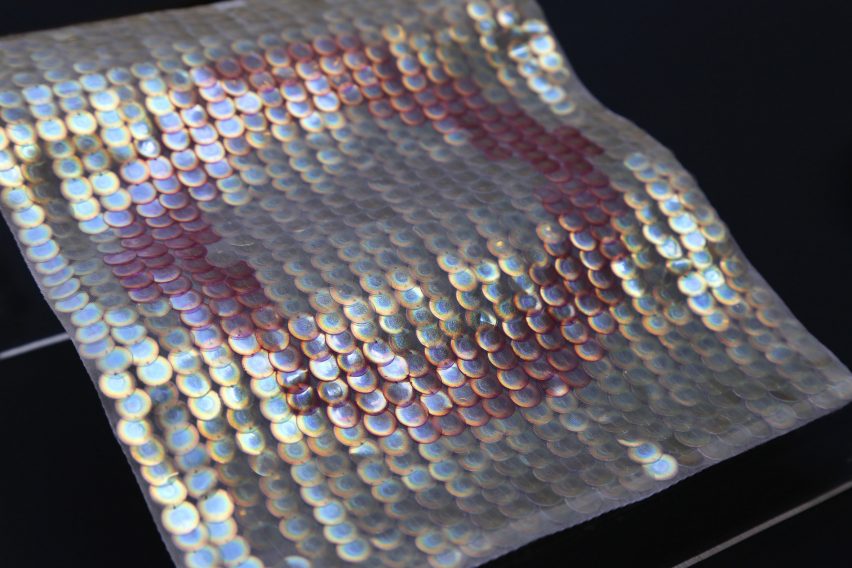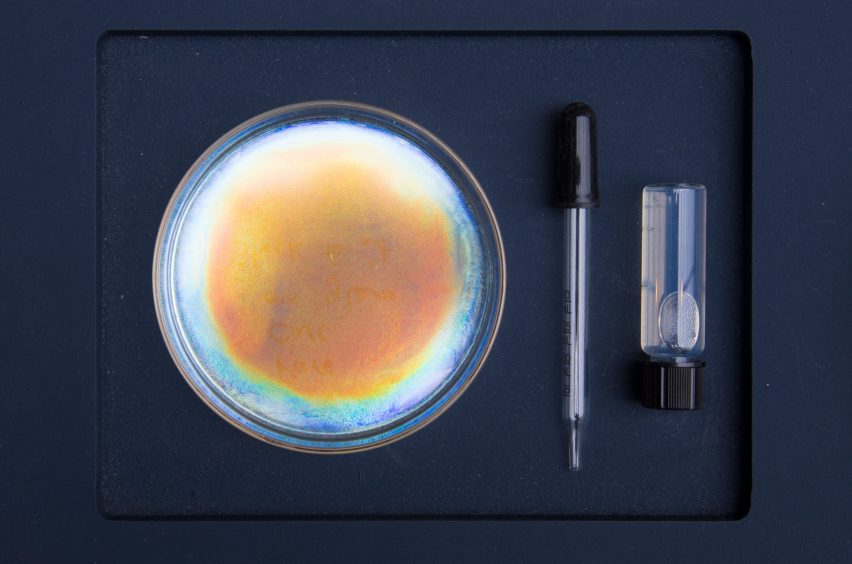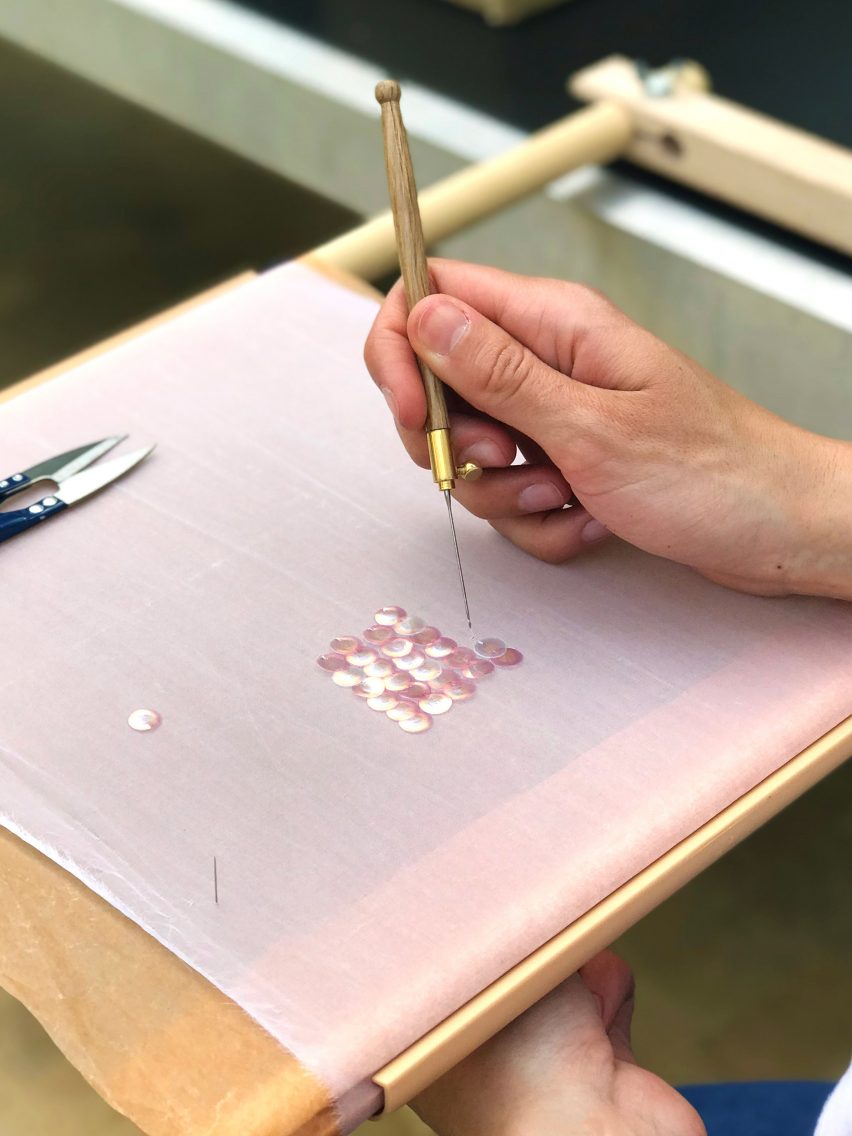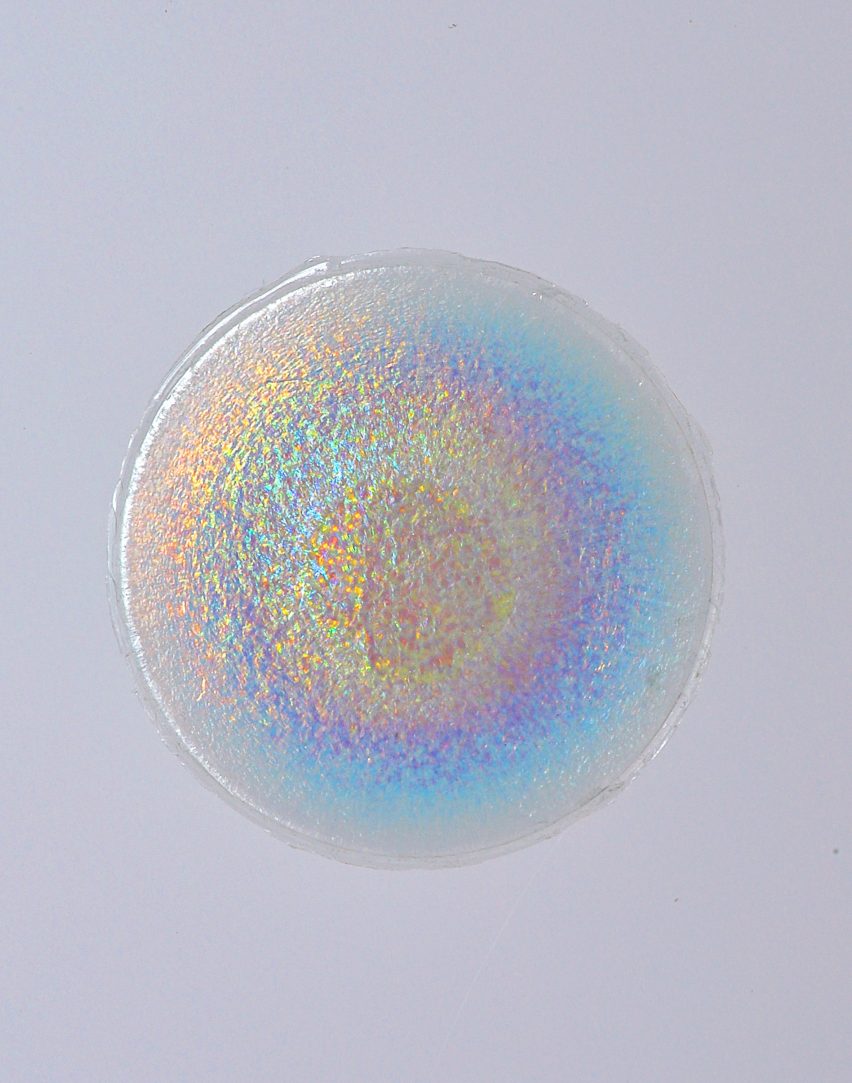
Bio Iridescent Sequin made from trees responds to growing demand for greener fashion
Designer Elissa Brunato has created the Bio Iridescent Sequin, a shimmering bead made from natural cellulose that is more sustainable than regular plastic sequins.
Instead of using petroleum-based plastic, Brunato has developed a way of making glittering disc-shaped beads from bioplastic based on cellulose extracted from trees.

The cellulose's crystalline form refracts light and makes the sequins naturally shimmery, without the need for pigments, dyes, metals or minerals.
"Making a Bio Iridescent Sequin starts with the growing of cellulose in nature, which can take anything from a couple of weeks to a number of years," Brunato explained to Dezeen.
"Cellulose is one of the most abundant polymers available on earth. It is one of the main ingredients plants are constructed from and you can extract it from any type of tree or obtain it from recycled resources such as paper," she added.

The sequins can be made in a variety of shapes and then sewn onto fabric like a traditional bead.
"As the material forms very strong bonds, the sequins are light and use very little cellulose per sequin," explained Brunato.
"In the future, the cellulose could originate from anything from fruit peels, or algae to used denim and waste paper."

Brunato developed the Bio Iridescent Sequin after talking to sequin suppliers and realising there was a growing demand for more sustainable materials from fashion brands such as Stella McCartney and the LVMH group, whose brands include Louis Vuitton and Fenty.
She developed the new material as part of her master's degree at Central Saint Martins in London, with the support of scientists Hjalmar Granberg and Tiffany Abitbol from the Research Institute of Sweden (RISE).
The sequins are currently at the development stage, but Abitol said that they should be able to be composted after use "in theory". The next steps include industrial testing for their biodegradable performance.
Dresses embroidered with sequins have seen a resurgence in popularity recently but experts fear that plastic sequins are disastrous for the environment.
"For a tree, as in the case of the first sequins I've made, the cellulose takes about a hundred years to form sufficiently. This is remarkably short in comparison to crude oil, which takes thousands of years to form," said Brunato.

Designers are increasingly looking for ways to provide the fashion industry with more sustainable materials.
Bolt Threads is a startup in California that is experimenting with a type of silk made using yeast and sugar, which has been used to make a dress by Adidas and Stella McCartney. Meanwhile, Canadian footwear brand Native Shoes has developed a trainer made from eucalyptus and pineapple husk.
Photography is by Elissa Brunato.